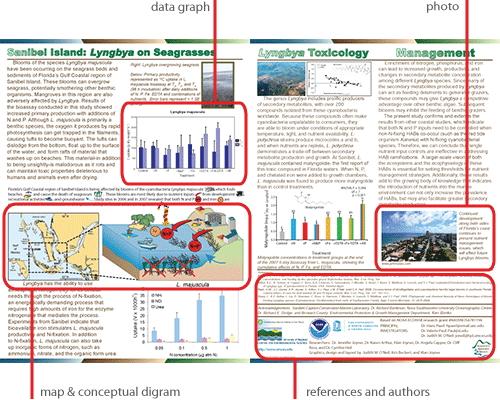"Rainbow Literature": Peer reviewed, colorful science communication products
Bill Dennison ·The gold standard for scientific publication is known as 'peer review'. This refers to the established practice of sending manuscripts to appropriate experts who critically review the data, the analysis of the data, the conclusions drawn from the results and even the style and manner of communicating the findings. Scientific manuscripts are submitted to an editor who selects anonymous reviewers (if the paper is deemed appropriate for the journal) and adjudicates if the reviewers disagree and makes the final decision on publication. Although the selected reviewers are anonymous, the authors submitting the manuscript are often asked to nominate reviewers, and even identify people to not send it to for review. Researchers can establish a cadre of friendly reviewers, and this can be used to advance their careers.
There has been a proliferation of scientific journals over the past two decades and manuscripts that are rejected from one journal are often resubmitted to alternative journals. Simple persistence can get virtually any paper published. The journal proliferation and academic tenure and promotion policies has also created the need for scientists to publish frequently, with an increasing need for reviewers. However, reviewing papers is purely an altruistic act that does not lead to promotion or tenure. Many more papers should be reviewed than submitted, given the ratio of a minimum of two reviewers per published manuscript and the additional reviews of unpublished manuscripts. Editors of scientific journals struggle to obtain timely, appropriate reviews and in contentious papers where additional reviews would be useful, it becomes even more difficult. Thus, the peer review process is under siege.
The science communication products that IAN produces undergo a peer review process with the following features. Our peer reviews are not anonymous, rather the reviewers are known to the authors. All authors are asked to review sections that they did not directly contribute to, and a team of IAN Science Integrators and Science Communicators are involved in the review process of each product. Since much of the content of IAN Science Communication products is scoped out in advance using a storyboard approach, establishing active titles (which are intensely edited), sourcing visual elements and nominating word counts associated with key messages, the final version to be edited has already received reviewer's scrutiny. In addition to text being reviewed and edited, the visual elements are also reviewed and revised. This process leads me to the conclusion that peer review scrutiny is more intense and more comprehensive in science communication products produced through the Integration and Application Network than science journal publications.
One reason that science communication products are deemed 'gray literature', and not regarded as highly as science writing was the more universal access to scientific journals. When scholarly libraries were the sole access points for scientific literature and 'gray literature', and scientific journals were distributed globally but 'gray literature' were typically only distributed locally. Thus a reason that that 'gray literature' were of less universal value was the parochial nature of their distribution. The advent of the internet has made access to 'gray literature' universally accessible and searchable. In addition, the internet has made the print versions of scientific journals less important, and electronic versions more prevalent. Electronic dissemination of scientific papers makes the use of color and incorporation of visual elements easier. We may see a convergence of style between scientific journals and science communication products.
One of the features of scientific journals is the a) highly stylized writing style, b) extensive use of scientific references, and c) use of acronyms and specialized terms. These features serve to a) avoid ambiguity, b) maintain a continuity with the scientific literature and c) provide precision to definitions. Yet, these features also serve to make scientific literature relatively impenetrable to all but specialists in the field. A common complaint by scientists about papers outside their field is that they cannot even understand the titles! So the lay person has little hope of understanding the average scientific paper.
Another form of science communication in the policy realm is known as a 'white paper', which refers to framing an issue and advocating for a certain policy outcome. White papers typically are written for a non-specialist audience, but are usually devoid of visual elements or data. These 'white papers' typically have a short shelf life as well.
Science communication products incorporate a variety of colorful visual elements, like photographs, maps, conceptual diagrams, and graphs. Thus, science communication products are anything but 'gray', and perhaps 'rainbow literature' would be a better term. The term 'rainbow literature' could be applied to science communication products that undergo peer review as described above (comprehensive, non-anonymous, multiple reviews) and incorporate a variety of colorful visual elements. The fact that this 'rainbow literature' is relatively accessible to non specialists as well as specialists should add, rather than detract from its value.

About the author
Bill Dennison

Dr. Bill Dennison is a Professor of Marine Science and Vice President for Science Application at the University of Maryland Center for Environmental Science.